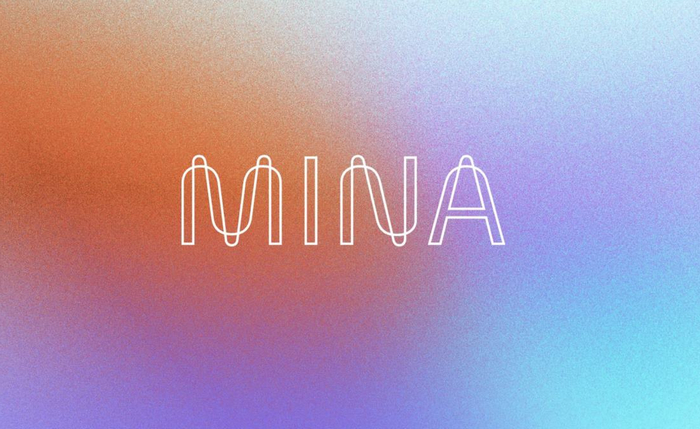-
 Bitcoin
Bitcoin $103,052.3368
0.20% -
 Ethereum
Ethereum $2,348.8183
6.90% -
 Tether USDt
Tether USDt $1.0000
0.01% -
 XRP
XRP $2.3597
2.36% -
 BNB
BNB $671.6147
7.40% -
 Solana
Solana $172.4009
5.95% -
 USDC
USDC $0.9999
-0.01% -
 Dogecoin
Dogecoin $0.2062
5.70% -
 Cardano
Cardano $0.7816
2.40% -
 TRON
TRON $0.2631
2.20% -
 Sui
Sui $3.9695
-0.97% -
 Chainlink
Chainlink $16.0560
1.67% -
 Avalanche
Avalanche $23.4319
5.68% -
 Stellar
Stellar $0.2985
0.76% -
 Shiba Inu
Shiba Inu $0.0...01512
5.62% -
 Hedera
Hedera $0.2024
3.93% -
 Hyperliquid
Hyperliquid $24.9394
7.24% -
 Bitcoin Cash
Bitcoin Cash $414.1252
-1.17% -
 Toncoin
Toncoin $3.3031
3.72% -
 UNUS SED LEO
UNUS SED LEO $8.6838
-2.00% -
 Litecoin
Litecoin $104.4137
10.24% -
 Polkadot
Polkadot $4.8959
9.11% -
 Monero
Monero $319.5215
6.04% -
 Dai
Dai $1.0000
0.01% -
 Pepe
Pepe $0.0...01266
15.36% -
 Bitget Token
Bitget Token $4.5610
1.56% -
 Pi
Pi $0.7355
6.79% -
 Ethena USDe
Ethena USDe $1.0001
0.01% -
 Uniswap
Uniswap $6.4866
6.32% -
 Bittensor
Bittensor $428.1574
1.03%
What currency is MINA? What does MINA coin mean?
MINA's constant-size blockchain and SNARK-based transactions ensure privacy and scalability, making it an ideal platform for decentralized financial applications.
Nov 02, 2024 at 02:02 am

1. What Is MINA Currency?
MINA (formerly Coda Protocol) is a blockchain project focused on building a privacy-preserving, scalable network that enables decentralized financial (DeFi) applications. Its native cryptocurrency is also called MINA.
2. Concept of MINA Coin
MINA aims to solve the scalability trilemma, where blockchains struggle to balance decentralization, security, and scalability. It achieves this by introducing a novel consensus mechanism called "Ouroboros Omega," which allows all network participants to validate transactions in real-time.
3. Key Features of MINA
- Constant Size Blockchain: Unlike Bitcoin and Ethereum, MINA's blockchain remains constant in size, regardless of the number of transactions processed.
- SNARK-Based Transactions: MINA uses zero-knowledge Succinct Non-Interactive Arguments of Knowledge (SNARKs) to prove the validity of transactions without revealing private data.
- High Transaction Throughput: By leveraging Ouroboros Omega and SNARKs, MINA can support high transaction volumes while maintaining decentralization.
- Energy-Efficient Design: MINA prioritizes energy efficiency by optimizing its consensus mechanism and utilizing lightweight cryptography.
4. Applications of MINA
MINA's privacy and scalability features make it suitable for a wide range of applications, including:
- Private Payments: Users can send and receive MINA with enhanced privacy, protecting their financial transactions from surveillance.
- DeFi Protocols: MINA's scalability enables the development of fast and efficient DeFi applications, such as decentralized exchanges, lending platforms, and stablecoins.
- Smart Contracts: Developers can build complex smart contracts on MINA, taking advantage of its privacy-preserving capabilities.
Conclusion
MINA is a promising cryptocurrency that addresses fundamental challenges in blockchain technology. Its unique features position it as a potential leader in privacy, scalability, and energy efficiency. As the blockchain ecosystem evolves, MINA is well-positioned to contribute to the growth of decentralized applications and reshape the future of digital finance.
Disclaimer:info@kdj.com
The information provided is not trading advice. kdj.com does not assume any responsibility for any investments made based on the information provided in this article. Cryptocurrencies are highly volatile and it is highly recommended that you invest with caution after thorough research!
If you believe that the content used on this website infringes your copyright, please contact us immediately (info@kdj.com) and we will delete it promptly.
- Virtuals protocol (virtual) Rallies 350%
- 2025-05-10 10:20:13
- While Ethereum Continues to Solidify Its Place as a Cornerstone of Decentralized Finance and Smart Contract Development
- 2025-05-10 10:20:13
- ApeChain is fueled by the creative energy of the Bored Ape Yacht Club (BAYC) community
- 2025-05-10 10:15:32
- Web3 ai Presale Promises a Toolkit That Can Change How You Trade Crypto
- 2025-05-10 10:15:32
- Peter Brandt: Ethereum Poised for Breakout Amid Congestion Pattern
- 2025-05-10 10:10:12
- Alex Mashinsky, the founder and former CEO of Celsius Network, has been sentenced to 12 years in prison
- 2025-05-10 10:10:12
Related knowledge

What is Ethereum’s Slashing mechanism and how to punish malicious behavior?
Feb 20,2025 at 03:08am
Key PointsOverview of slashingDifferent types of slashing in EthereumIncentives and consequences of slashingIdentifying and reporting slashed validatorsOngoing discussions and potential improvementsEthereum's Slashing Mechanism: Punishing Malicious BehaviorEthereum's slashing mechanism is an essential tool for ensuring network security and punishing mal...

What is the verifier node of Ethereum and how to become a verifier?
Feb 19,2025 at 06:00pm
The Verifier Node of Ethereum: A Comprehensive GuideKey Points:What is a Verifier Node?How to Become a Verifier NodeResponsibilities and Rewards of a Verifier NodeMinimum Requirements for Becoming a Verifier NodePotential Difficulties in Running a Verifier Node1. What is a Verifier Node?A Verifier Node is an independent entity on the Ethereum network th...

What is Ethereum’s staking, and how to participate and earn money?
Feb 19,2025 at 04:37pm
Key Points:Understanding Ethereum's Staking MechanismSteps to Participate in StakingBenefits and Rewards of StakingSecurity and Risk ConsiderationsTechnical Requirements and Hardware OptionsPotential Challenges and Troubleshooting TipsFAQs on Ethereum StakingWhat is Ethereum's Staking?Proof-of-Stake (PoS) is a consensus mechanism used in blockchain netw...

What is Ethereum’s DAO (Decentralized Autonomous Organization) and how does it work?
Feb 20,2025 at 03:12am
Key PointsDefinition and Structure of a DAOGovernance and Decision-Making in DAOsBenefits and Use Cases of DAOsChallenges and Limitations of DAOsWhat is Ethereum's DAO (Decentralized Autonomous Organization) and How Does It Work?Definition and Structure of a DAOA Decentralized Autonomous Organization (DAO) is an innovative governance and management fram...

What is Ethereum's multi-signature wallet and how to improve security?
Feb 20,2025 at 02:18pm
Key Points:Understanding the Concept of a Multi-Signature WalletBenefits and Drawbacks of Multisig WalletsRequirements for Setting Up a Multisig WalletStep-by-Step Guide to Generating a Multisig WalletImplementing Strategies for Enhanced Security1. Understanding the Concept of a Multi-Signature WalletA multi-signature (multisig) wallet in the Ethereum e...

What is Ethereum's oracle and how to provide data for smart contracts?
Feb 21,2025 at 01:30am
Key Points:Understanding the concept of oracles in EthereumExploring different types of oraclesDetailed guide on how to provide data for smart contractsAddressing potential challenges and considerationsWhat is Ethereum's Oracle?Oracles are crucial components in the Ethereum ecosystem, enabling smart contracts to access real-world data and off-chain even...

What is Ethereum’s Slashing mechanism and how to punish malicious behavior?
Feb 20,2025 at 03:08am
Key PointsOverview of slashingDifferent types of slashing in EthereumIncentives and consequences of slashingIdentifying and reporting slashed validatorsOngoing discussions and potential improvementsEthereum's Slashing Mechanism: Punishing Malicious BehaviorEthereum's slashing mechanism is an essential tool for ensuring network security and punishing mal...

What is the verifier node of Ethereum and how to become a verifier?
Feb 19,2025 at 06:00pm
The Verifier Node of Ethereum: A Comprehensive GuideKey Points:What is a Verifier Node?How to Become a Verifier NodeResponsibilities and Rewards of a Verifier NodeMinimum Requirements for Becoming a Verifier NodePotential Difficulties in Running a Verifier Node1. What is a Verifier Node?A Verifier Node is an independent entity on the Ethereum network th...

What is Ethereum’s staking, and how to participate and earn money?
Feb 19,2025 at 04:37pm
Key Points:Understanding Ethereum's Staking MechanismSteps to Participate in StakingBenefits and Rewards of StakingSecurity and Risk ConsiderationsTechnical Requirements and Hardware OptionsPotential Challenges and Troubleshooting TipsFAQs on Ethereum StakingWhat is Ethereum's Staking?Proof-of-Stake (PoS) is a consensus mechanism used in blockchain netw...

What is Ethereum’s DAO (Decentralized Autonomous Organization) and how does it work?
Feb 20,2025 at 03:12am
Key PointsDefinition and Structure of a DAOGovernance and Decision-Making in DAOsBenefits and Use Cases of DAOsChallenges and Limitations of DAOsWhat is Ethereum's DAO (Decentralized Autonomous Organization) and How Does It Work?Definition and Structure of a DAOA Decentralized Autonomous Organization (DAO) is an innovative governance and management fram...

What is Ethereum's multi-signature wallet and how to improve security?
Feb 20,2025 at 02:18pm
Key Points:Understanding the Concept of a Multi-Signature WalletBenefits and Drawbacks of Multisig WalletsRequirements for Setting Up a Multisig WalletStep-by-Step Guide to Generating a Multisig WalletImplementing Strategies for Enhanced Security1. Understanding the Concept of a Multi-Signature WalletA multi-signature (multisig) wallet in the Ethereum e...

What is Ethereum's oracle and how to provide data for smart contracts?
Feb 21,2025 at 01:30am
Key Points:Understanding the concept of oracles in EthereumExploring different types of oraclesDetailed guide on how to provide data for smart contractsAddressing potential challenges and considerationsWhat is Ethereum's Oracle?Oracles are crucial components in the Ethereum ecosystem, enabling smart contracts to access real-world data and off-chain even...
See all articles























































































